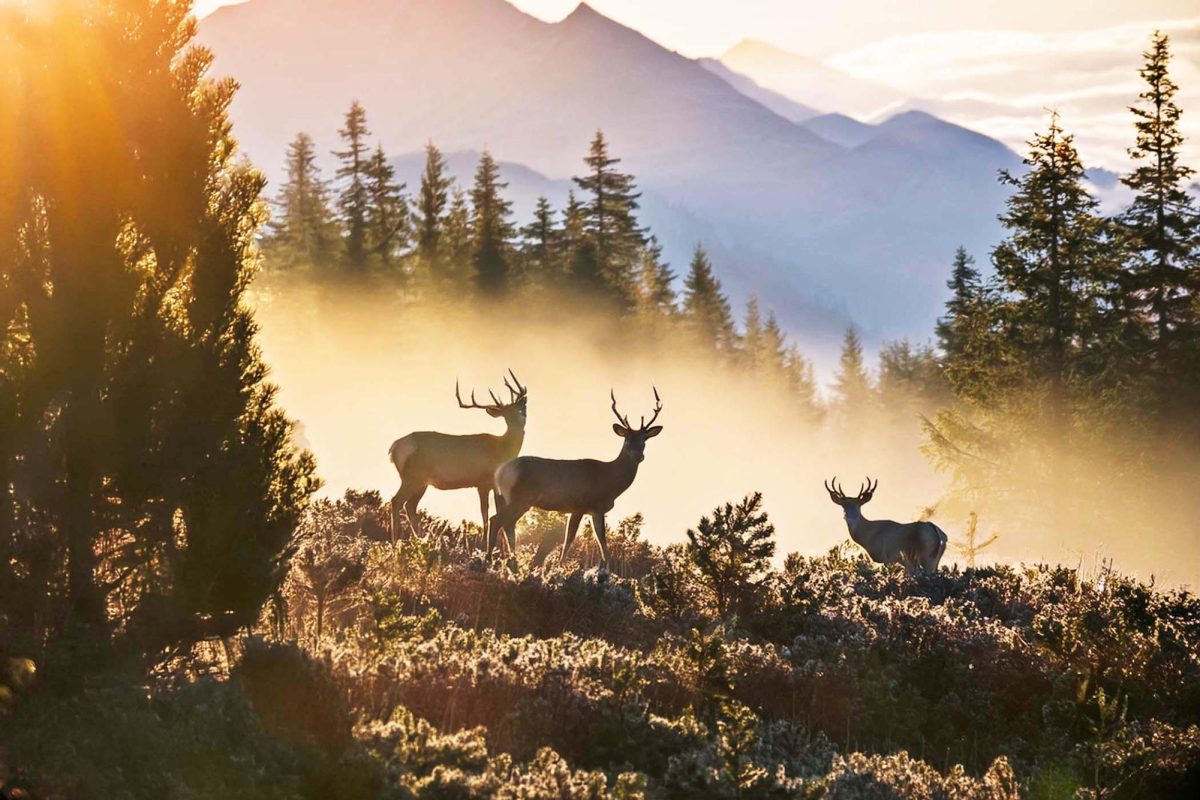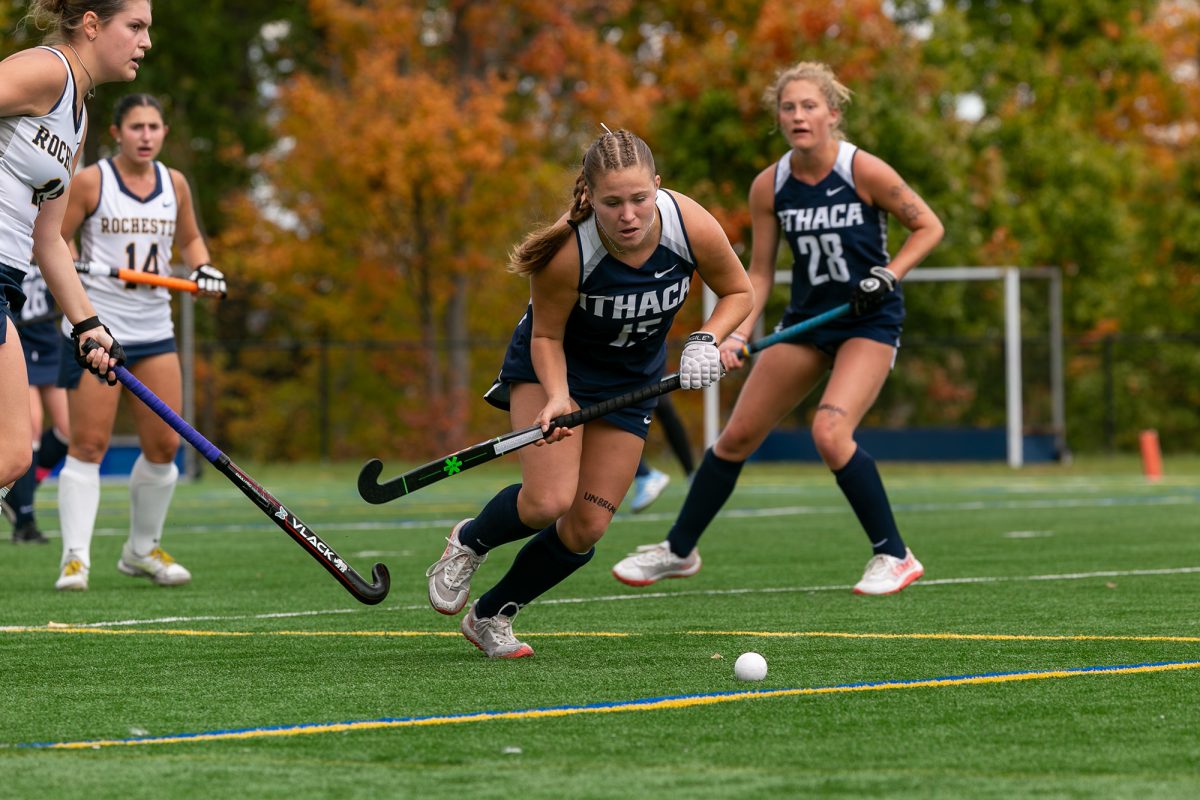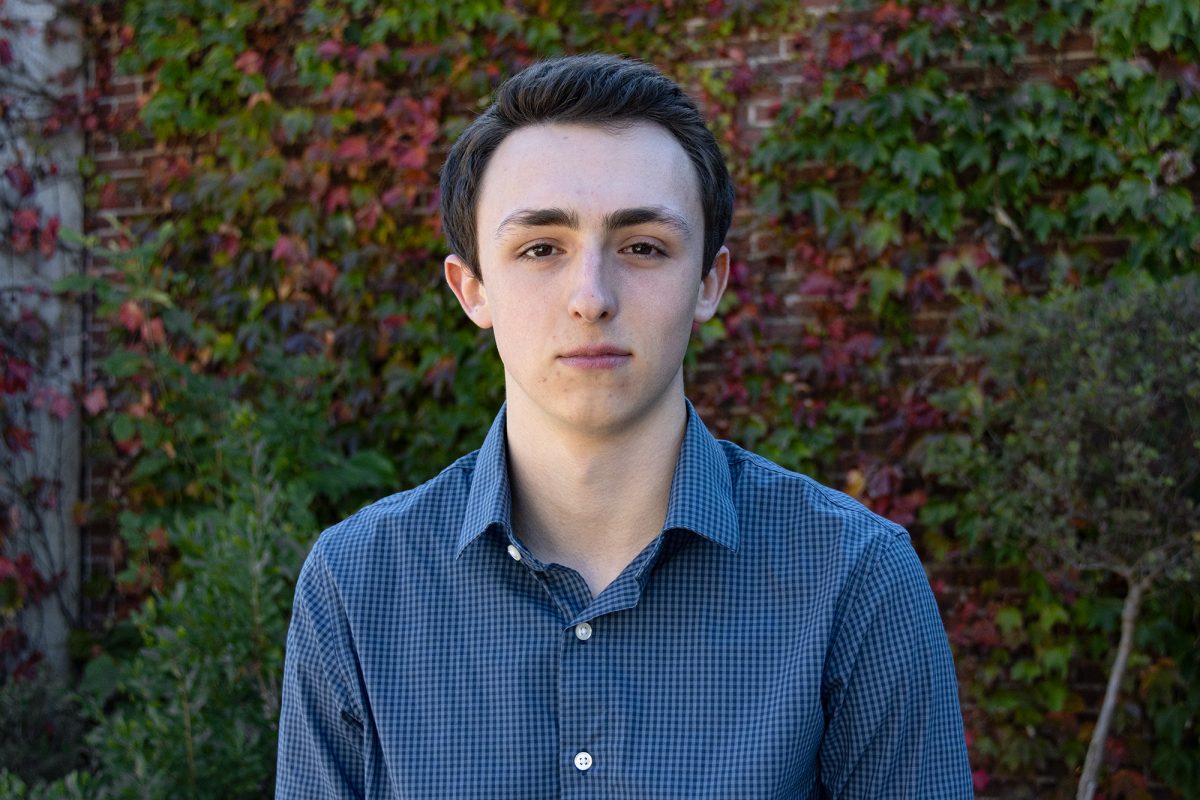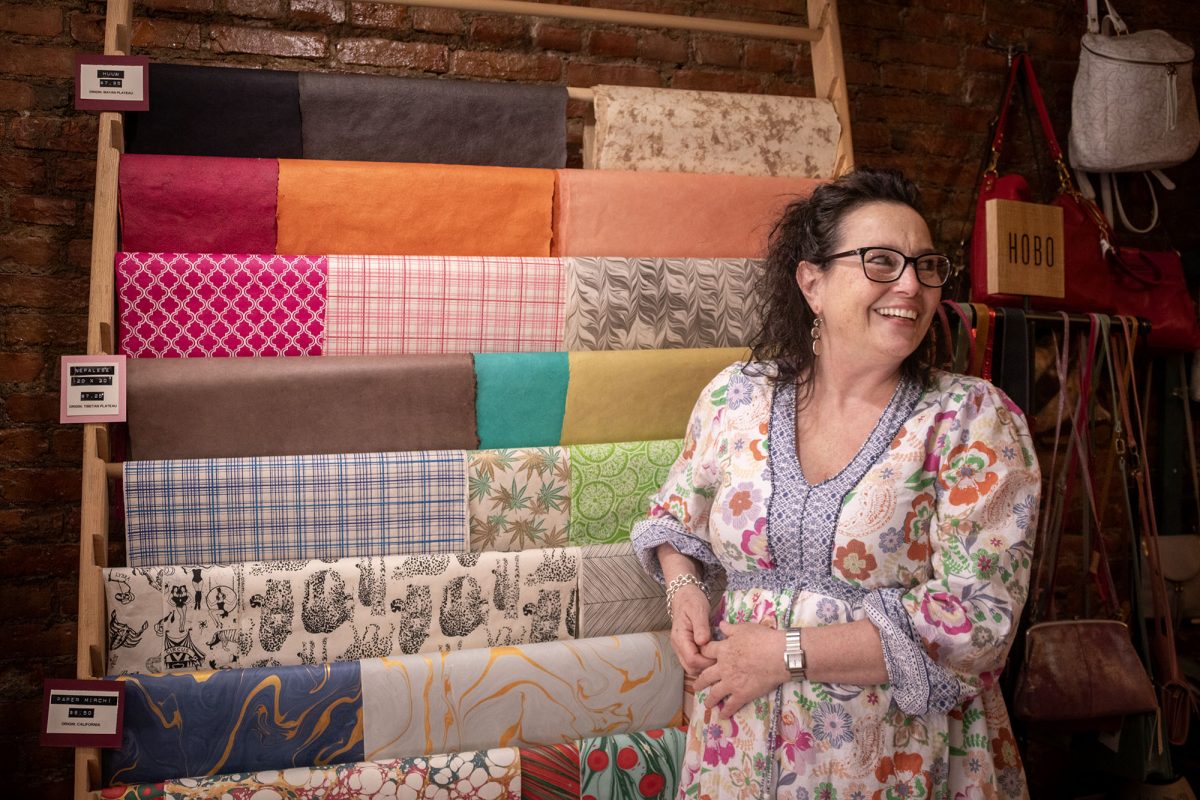The use of artificial intelligence is a controversial topic, and with advancements made in the world of digital and physical art, the conversation on AI’s role in the art world has spread to classrooms at Ithaca College.
Generative AI is a type of artificial intelligence with the purpose of creating content — whether it be images, video, text or art — by using existing data and recognizing patterns.
According to Ithaca College’s website, for the 2024-25 academic year, Ithaca College was granted AI Mini-Grants for Course Integration in order to integrate AI into classrooms across campus. A main goal of the college with these grants is to enhance student AI literacy, which is how to understand and evaluate artificial intelligence. Though not all classes were given this grant, the college is working to prepare students for an AI-driven future by implementing it into curriculums and aligning AI with Ithaca College’s core values and goals.
Michael Lewis, assistant professor in the Department of Media Arts, Sciences, and Studies, recently assigned his Advanced Digital Photography class a project on digital manipulation. Lewis said that although he has done this project since Fall 2024, this semester is the first time he assigned one of the images to be generated fully by AI.
“I think [AI] can be used as a powerful tool for certain retouchings or certain shiftings of composition and things of that nature,” Lewis said. “I’ve spent more time on some of these AI images than it takes me to actually … just [take] a photograph. So, I found that hours can melt away and there’s definitely a craft element to it.”
Lewis said via email that the students are using AI tools in Adobe Photoshop to create their images, and this process can range from taking seconds to hours.
Cameron Howard, a sophomore cinema and photography major and student in the class, said he thinks AI should be used more as a tool than as a way of replacing the process of making art by hand.
“[AI is] something you can use to enhance your art,” Howard said. “I think that devoting the entire piece of art to complete AI control is not really your art at that point. It’s more computer generated and takes away from the idea of art itself.”
Though some of the student’s final products were still in the early stages of production, Howard had already started generating his final piece.
“I decided to do [an] AI image of a lighthouse with people around it,” Howard said. “I just kind of did something that I thought would look nice, and just because [Lewis] wanted [it] to look like a real photo taken by someone.”
CJ Owen, a sophomore film major in the class, said the line of ownership seems to get blurry because AI often uses authorship of other artists’ work and real-world references to generate its images, according to an article from the Houston Law Review. Owen said their main principle is that AI cannot fully be one’s own work due to the way the program is trained.
“I think that all of [the images are] being taken from other people’s work,” Owen said. “[Yet] it’s not easy to get a really realistic looking AI image. So, I understand there is work being put into [using AI] if you’re trying to make it look super real. … [But it’s] like there wasn’t a creative intent behind it.”

Owen said AI can be useful to get you to a finished product, but that the technology might be doing more harm than good.
“I think we’re in a … gray area where AI is making things easier for people, but it’s also making things harder for the people who are being affected by the fields that AI is taking away from,” Owen said.
According to an article on SIAM.org, AI systems are also not fully powered by renewable energy sources and contribute to fossil fuel emissions. Megan McNeil, a sophomore film, photography and visual arts major in the class, said that although AI serves as a gateway of opportunity in terms of creation and workshopping, the threat to environmental sustainability is something that must be taken more into account. According to OECD.AI, AI servers generate heat, which needs to be cooled using cooling towers and outside air, both of which require mass amounts of water.
“[There are] people who are not fortunate enough to have clean water and access to it,” McNeil said. “Yet it’s being used so that people can generate a prompt for their homework assignment. … I feel like it’s a little ridiculous … generating things for the sake of [art]work.”
Despite the sustainability issues surrounding the use of AI, Lewis said that its future is unclear and he is undecided on his opinion of AI use in art.
“I think when Photoshop first came around, the impact that everybody thought it was going to have on photography was correct, but it certainly didn’t go anywhere,” Lewis said. “And I think the same thing is going to happen with AI.”
McNeil said that instead of creating artwork, AI has the potential to serve purposes better suited to people’s needs.
“I just feel like we should use AI to do the more mundane things in life that take away from us creating art and expressing ourselves, and engaging with other people,” McNeil said. “AI could be doing so much to help us live more, because what’s the point of living if we’re just going to create AI art and then do all the boring stuff.”









Sarah • Apr 3, 2025 at 12:20 pm
Great article. I understand there are
many benefits to AI, but personally I
like to see someone’s own vision of
their art, what ever platform it may
be, like Poems, photography
drawing, painting, and music ect ect.
I agree with the point that AI is a
cumulative work of what is “out
there” so truly not one’s own work and I think takes away from beauty of “real” art.
I love hearing from the students, they are our next generation of leaders. It is great to hear their perspective.